William Knibb was a missionary and anti-slavery campaigner. He attended Borough Road College in 1824, and maintained contact with the British and Foreign School Society for the rest of his life. Brunel's Archive contains a copy of a book of examples of children’s work which he sent back to London as an example of how much his pupils had learnt. It became known within the BFSS as “The Slave Book”. The founding of the BFSS was contemporary with the growing anti-slavery movement in Britain, to which the BFSS had close links
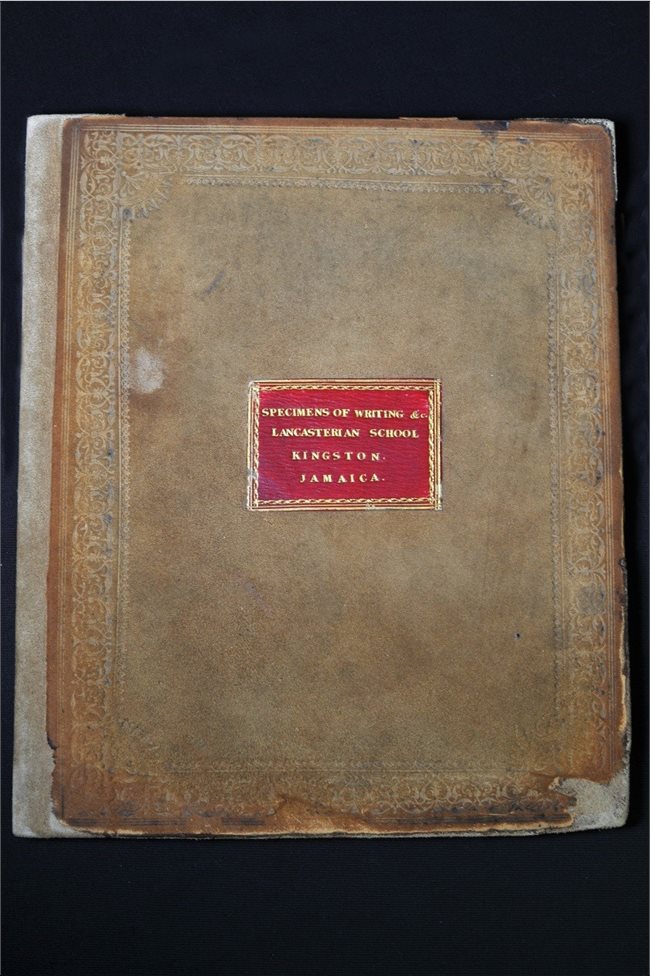
William Knibb was born in Kettering, Northamptonshire, in 1803. His father was a tailor and he was one of eight children. Aged 12 William was apprenticed to a printer and moved to Bristol. In 1822 William became a Baptist. The following year William’s older brother Thomas went to Jamaica as a school teacher, under the auspices of the Baptist Missionary Society. He died only 14 months later, and William offered to take his place.
In 1824 William attended Borough Road College to train as a teacher, in preparation for going to Jamaica. On 5th Nov 1824 William and his new wife Mary set sail for Jamaica. They arrived 12th February 1825.
The horrors of slavery quickly become apparent to William. Despite having been warned by the Baptist Missionary Society not to interfere in political affairs, William vowed to fight against slavery.
“The cursed blast of slavery has, like a pestilence, withered almost every moral bloom. I know not how any person can feel a union with such a monster, such a child of hell. I feel a burning hatred against it and look upon it as one of the most odious monsters that ever disgraced the earth”.
“William Knibb: Missionary in Jamaica, A Memoir” by Mrs. John James Smith
Despairing of the conditions of the existing school room, William had a new school built in Kingston, which was completed in 1826. In 1828 he was able to send the book of examples of his pupils’ work back to the BFSS in London.
His school grew to over 200 pupils, both slaves and free. He taught six days a week and ran a Sunday School for adults and children.
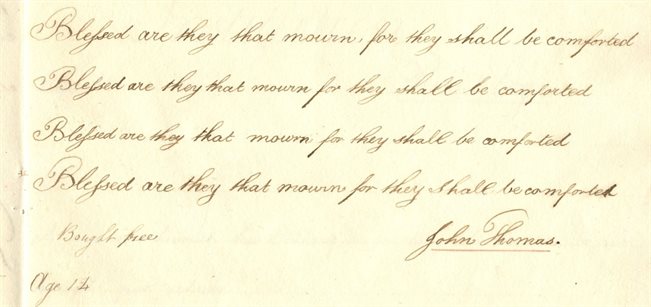
Handwriting of John Thomas, aged 14, “Bought free”.
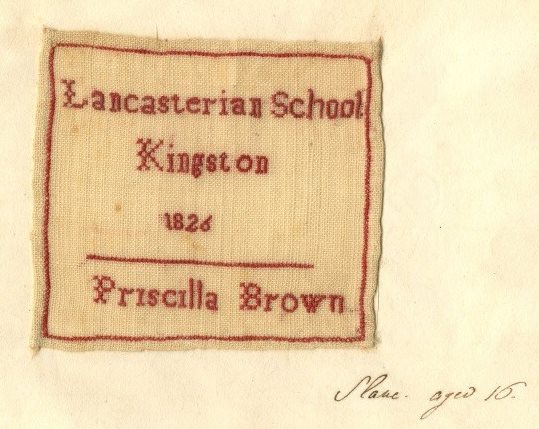
At Christmas 1831 a slave rebellion broke out in western Jamaica. Accused by plantation owners of inciting the slaves to riot, William was arrested. Some planters, determined to oppose abolitionism, began to take matters into their own hands. They burnt down several of the slaves’ chapel, including William’s at Falmouth. William was released on bail. Other missionaries of all societies began to leave Jamaica, but William would not leave. The planters decided to drive him out. An armed mob set out to where he was staying, forcing his wife and children to seek shelter with the only sympathetic member of the island’s governing body, and Knibb was taken into protective custody on board a ship in Montego Bay, where he remained for several weeks.
In 1832 William made the long voyage back to England to preach against slavery, undertaking an extensive tour of public meetings throughout England and Scotland. He spoke to select committees of both houses of parliament.
The following year in August 1833 the Slavery Abolition Act abolished slavery throughout the British Empire, although anyone over the age of 6 remained “apprenticed”.
William returned to Jamaica in 1834 with a large sum of money donated by church congregations for the rebuilding of the chapels destroyed by the planters. A grant of £25000 pa for 10 years had also been allocated for school building in the West Indies. New schools were opened in many parts of the island, including a new school in Falmouth run by William.
The first day of full freedom for the slaves, when the apprenticeship system was ended, was 1st Aug 1838. William declared:
“I pledge myself…never to rest satisfied, until I see my black brethren in the enjoyment of the same civil and religious liberties which I myself enjoy, and see them take a proper stand in society”.
In September 1839 William founded the weekly newspaper “The Baptist Herald and Friends of Africa”, which gave the emancipated slaves a voice of their own. He was also involved in buying land for the freedmen and establishing villages (many white landowners refused to sell land to the free people), and in the struggle for fair wages for them.
Having made the arduous voyage back to England yet again, in June 1840 William attended the landmark first World Anti-Slavery Society Convention held at Exeter Hall in London. He appears in the painting The Anti-Slavery Society Convention, 1840, by Benjamin Robert Haydon, which is in the National Portrait Gallery.
On 15th November 1845 William died in Falmouth, Jamaica, of Yellow Fever, aged 42. By this time he had helped liberate 300 000 slaves; raised money for 1000s of acres of land to enable former slaves to own their own houses and land; was associated with the founding of 35 churches, 24 missions and 16 schools; and had translated the Bible into Creole, the language of the emancipated slaves. His wife Mary stayed in Jamaica and outlived him by 25 years. Sadly most of their children had died in childhood.
On the 150th anniversary of the abolition of slavery in British Territories, in 1988, William Knibb was posthumously conferred with the Jamaican Order of Merit, Jamaica’s highest honour granted to civilians. A church and high school in Trelawney, Jamaica were renamed in his honour.
In July 2003 Usain Bolt graduated from the William Knibb Memorial High School, one of many international athletes the school has produced.
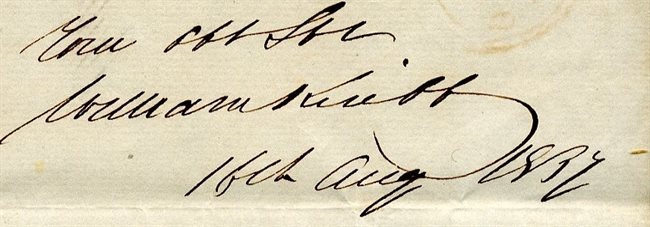
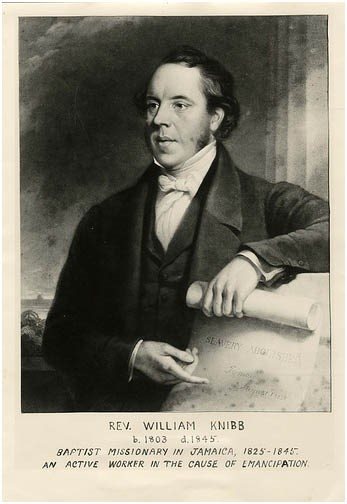
Image courtesy of Anti-Slavery International
William Knibb is featured in our current 'Being Human' exhibition in the Eastern Gateway Building. Please take a look.